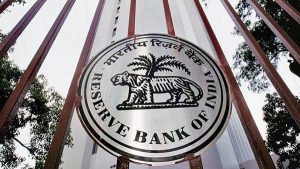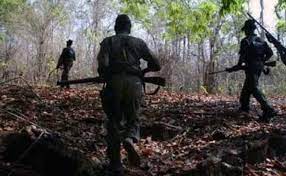Today’s Current Affairs: 9th February 2023 for UPSC IAS exams, State PSC exams, SSC CGL, State SSC, RRB, Railways, Banking Exam & IBPS, etc
Table of Contents
Integrative Medicine Center:

The Government of India is to inaugurate Integrative Medicine Centers.
- These centres will operate at Government hospitals.
- The centres will mainly focus on Ayurvedic medicines and will use modern technologies.
- The first Integrative Medicine Centre was inaugurated at the Safdarjang Hospital in Delhi.
- The main objective of the initiative is to use the traditional knowledge of Indians in the medicinal field.
- The initiative has been launched on this basis. Also, through the Integrative Medicine Centres, the GoI tries to reach the grass root levels.
- AYUSH is main player in the field
Monetary Policy Updates : RBI

The committee recently held its meeting on February 8, 2023.
Highlights:
- RBI hikes benchmark lending rate by 25 basis points to 6.50 per cent. MSF rate will stand revised at 6.75%
- RBI projects 6.4 pc economic growth for 2023-24, lower than 7 pc this fiscal
- Inflation to come down to 5.3 pc in 2023-24, from average of 6.5 pc this fiscal
- Inflation outlook clouded by protracted geopolitical tensions, rising commodity prices
- Indian economy resilient; higher rabi acreage, robust credit expansion, thrust on capex in Budget 2023-24 to support growth
- Current account deficit to moderate in Oct-March, from 3.3 pc in April-Sept this fiscal
- Foreign exchange reserves at USD 576.8 billion as on January 27, 2023, covers 9.4 months of projected imports for 2022-23
- Indian Rupee remained one of the least volatile currencies among its Asian peers in 2022 and this year
- All inbound travellers to India will be allowed to use UPI for their merchant payments
- Pilot for QR Code based Coin Vending Machine (QCVM) to be launched in 12 cities
Child Marriages In Assam : 2,000 People Arrested

More than 2,000 people have been arrested in a statewide crackdown on child marriages that have taken place in the state of Assam.
- UN estimates suggest that 1.5 million girls get married before they turn 18 in India.
- According to the 2011 census, 44 per cent of women in Assam were married before the age of 18.
- The figures for Rajasthan, Bihar, and Madhya Pradesh were 47 per cent, 46 per cent, and 43 per cent, respectively.
- The POCSO Act, of 2012 criminalizes sex between a minor and an adult.
- The law does not recognize a minor’s consent as valid. Sexual assault under POCSO is a non-bailable, cognizable offence.
- Section 19 of, the POCSO Act imposes a “mandatory reporting obligation” which requires every person who suspects or has knowledge of a sexual offence being committed against a child must report it to the police or the Special Juvenile Police Unit.
- The Prohibition of Child Marriage Act 2006, says that child marriages are illegal but not void. Instead, they are voidable at the option of the minor party, in the scenario that the minor petitions the court to declare the marriage void.
- The Act stipulates 18 years as the minimum marriageable age for women, while for men it is 21 years.
- The punishment also extends to anyone who performs, conducts, directs, or abets any child marriage.
- In 2021, the Central government sought to introduce the Prevention of Child Marriage (Amendment) Bill 2021, to raise the manageable age for women across all religions, from 18 to 21 years. However, the Parliament panel examining this is yet to submit its report.
- The establishment of the Jaya Jaitly Committee in June 2020, by the Ministry of Women & Child Development, submitted a report stating that the marriageable age for women should be increased from 18 to 21 years of age, in light of factors like reproductive health, education, etc
Left Wing Extremism : Decline In Violence

The Union Home Minister in a meeting said that for the first time in 4 decades, the number of deaths of civilians and security forces in Left Wing Extremism (LWE) came down under 100 in 2022.
- Violence related to LWE had come down by 76% in 2022 as compared to 2010.
- LWE organizations are the groups that try to bring change through violent revolution.
- They are against democratic institutions and use violence to subvert the democratic processes at the ground level.
- As part of the goal to ensure all-round development in LWE affected areas; construction of 11,811 km of roadways had been completed to improve road connectivity, 2,343 mobile towers had been installed during the last 8 years, 245 Eklavya Model Residential Schools had been sanctioned in 90 LWE-affected districts and 121 of them were now functional.
Left-wing Extremism:
- The left-wing extremism (LWE) or Naxal insurgency in India originated in a 1967 uprising in Naxalbari, West Bengal by the Communist Party of India (Marxist).
- They are the group of people who believe in the political theory derived from the teachings of the Chinese political leader Mao Zedong.
- The Naxals strongly believe that the solution to social and economic discrimination is to overthrow the existing political system.
New Haj Policy:

The ministry of Minority Affairs has announced a new Haj policy under which the application forms have been made available for free and the package cost per pilgrim has been reduced by Rs 50,000.
- The reduction of Rs 50,000 comes primarily in the form of relaxation of norms for foreign currency ,earlier a Haj pilgrim had to submit the equivalent of 2,100 Saudi Riyal, amounting to approximately Rs 44,000, that was submitted to the Haj Committee for foreign exchange.
- The Hajj is a religious pilgrimage to the holy city of Mecca in Saudi Arabia that is mandatory for all able-bodied Muslims who can afford it.
- It is one of the Five Pillars of Islam and is considered a central part of Muslim religious life.
- Ministry of Minority Affairs is the nodal ministry to conduct Haj pilgrimage in India.
- Haj pilgrimage for the Indian Pilgrims is conducted either through Haj Committee of India (HCoI), which is a statutory organization under the administrative control of Ministry of Minority Affairs or through the Haj Group Organisers (HGOs) dully approved by Ministry.
- Also, the Hajj pilgrimage is promoted by various religious organizations, Islamic cultural centers, and other government agencies.
- India signed the Haj 2023 bilateral agreement with Saudi Arabia.
- According to the agreement, a total of 1,75,025 Indian Haj pilgrims will be able to perform Haj, reportedly the highest in history.
Google To unveil Its New AI Chatbot Bard:

Google will soon unveil its new AI chatbot Bard in response to Microsoft’s ChatGPT
- Bard is based on the Language Model for Dialogue Application (LaMDA), Google’s own conversational AI chatbot.
- It will give in-depth, conversational and essay-style answers just like ChatGPT does right now.
- However, the model is currently a “lightweight” version of LaMDA, and the one being “requires significantly less computing power, enabling it to scale to more users.
- It is built on Transformer technology, which is also the backbone of ChatGPT and other AI bots.
- Transformer technology was pioneered by Google and made open source in 2017.
- Transformer technology is a Neural Network Architecture, which is capable of making predictions based on inputs and is primarily used in natural language processing and computer vision technology.
- The architecture determines how the network processes information and influences its accuracy and efficiency in solving a particular problem. Common architectures include feedforward networks, recurrent networks, and convolutional neural networks.
- ChatGPT has impressed with its ability to respond to complex queries — though with varying degrees of accuracy — but its biggest shortcoming perhaps is that it cannot access real-time information from the Internet.
- But Microsoft just unveiled a new version of Bing that’s powered by ChatGPT which is a significant improvement of the version of ChatGPT.
- ChatGPT’s language model was trained on a vast dataset to generate text based on the input, and the dataset, at the moment, only includes information until 2021.
- Whereas, for questions where there might not be a clear-cut answer, Bard will synthesise a response that reflects differing opinions.
Accidental Deaths And Suicide In India (ADSI) Report 2021 : Student Suicides

The National Crime Records Bureau’s (NCRB’s) Accidental Deaths and Suicide in India (ADSI) report 2021 shows student suicides had gone up drastically during the Covid-19 pandemic in 2020 and 2021 and have been steadily rising in the last five years.
- Over 13,000 students died by in 2021 in India at the rate of more than 35 every day, a rise of 4.5% from the 12,526 deaths in 2020 with 864 out of 10,732 suicides being due to “failure in examination” according to the latest data as per NCRB’s ADSI report 2021.
- Since 1995, the country lost the highest number of students to suicides in 2021, while nearly 2 lakh of them have died by suicide in the past 25 years.
- The death by suicide of students has increased by 32.15% since 2017, when 9,905 students died by suicide.
- Maharashtra had the highest number of student suicides in 2021 with 1,834, followed by Madhya Pradesh and Tamil Nadu.
- The report also showed the percentage of women student suicide was at a five-year low of 43.49%, while men student suicides made up 56.51% of the total student suicides.
- In 2017, 4,711 women students died by suicide, while in 2021 such deaths increased to 5,693.
- As per Ministry of Education, 122 students from IITs, NITs, central universities and other central institutions died by suicide over 2014-21.
- 68 of 122 belonged to the scheduled castes (SC), scheduled tribes (ST) or other backward classes (OBC).
- Suicides are a growing concern in Kota, India, a hub for engineering and medical entrance exams preparation.
- As of January 2023, 22 students have died in Kota since 2022 and around 121 have died since 2011.
Dickinsonia : Fossil Discovered

An alleged fossil discovered near Bhopal about two years ago and thought to be of the extinct Dickinsonia turned out to be the impression of a decayed beehive.
- Dickinsonia is an extinct genus of basal animal that lived during the late Ediacaran period on ocean floors around present-day’s Australia, Russia and Ukraine.
- The individual Dickinsonia typically resembles a bilaterally symmetrical ribbed oval.
- Its affinities are presently unknown; its mode of growth is consistent with a stem-group bilaterian affinity, though some have suggested that it belongs to the fungi or even an “extinct kingdom”.
- The discovery of cholesterol molecules in fossils of Dickinsonia lends support to the idea that Dickinsonia was an animal.
- It is believed to be one of the key links between the early, simple organisms and the explosion of life in the Cambrian Period, about 541 million years ago.
Quasicrystals : Third Natural Source

Scientists have discovered a third natural source of quasicrystals.
- Quasicrystal, also called quasi-periodic crystal, matter formed atomically in a manner somewhere between the amorphous solids of glasses and the precise pattern of crystals.
- In quasicrystals, the atoms are arranged in a pattern that repeats itself at irregular, yet predictable, intervals.
- The American-Israeli scientist Dan Shechtman discovered quasicrystals in the lab in 1982.
- The first natural quasicrystal found was as microscopic grains in a fragment of the Khatyrka meteorite lying in the Koryak mountains of Russia.
- The second time scientists found natural quasicrystals in the remains of the Trinity test of the Manhattan Project.
- Recently in the Sand Hills dunes in northern Nebraska, where scientists found silicate glass which is a dodecagonal quasicrystal, rare even for quasicrystals.
Core Inflation In India : Declining

S&P Global Ratings recently said core inflation in India has been declining sequentially, and an elevated 6.25 percent policy rate limits the need for further rate hikes.
- Core inflation is the change in the costs of goods and services but does not include those from the food and energy sectors.
- Food and energy prices are exempt from this calculation because their prices can be too volatile or fluctuate wildly.
- Core inflation is used to determine the impact of rising prices on consumer income.
- If the increase in the price index is due to temporary shocks that could soon reverse themselves, it may not require any monetary policy action.
- To deal with such situations, many central banks use measures of core inflation that are designed to filter the transitory price movements.
- Core inflation by eliminating the volatile components from the headline helps in identifying the underlying trend in headline inflation and is believed to predict future inflation better.
- Core inflation is a convenient guide to help the central bank achieve its objective of controlling total inflation.
Headline Inflation:
- It is the raw inflation figure reported through the Consumer Price Index (CPI).
- The CPI determines inflation by calculating the prices of a fixed basket of goods.
- Core inflation removes the CPI components that can exhibit large amounts of volatility from month to month.
S&P Global Ratings:
- S&P Global Ratings is an American credit rating agency and a division of S&P Global that publishes financial research and analysis on stocks, bonds, and commodities.
Liberalised Remittance Scheme: Union Budget 2023

The Union Budget 2023 proposes a Tax Collection at Source (TCS) for foreign outward remittance under LRS (other than for Education and medical purpose) of 20% on the entire value.
- Liberalised Remittance Scheme (LRS) allows Indian residents to freely remit up to USD $250,000 per financial year for current or capital account transactions or a combination of both.
- Any remittance exceeding this limit requires prior permission from the RBI.
- The scheme was introduced on February 4, 2004
- Only individual Indian residents, including minors, are permitted to remit funds under LRS.
- Corporates, partnership firms, HUF, trusts, etc., are excluded from its ambit.
- There are no restrictions on the frequency of remittances under LRS.
- Once a remittance is made for an amount up to USD 2,50,000 during the financial year, a resident individual would not be eligible to make any further remittances under this scheme.




